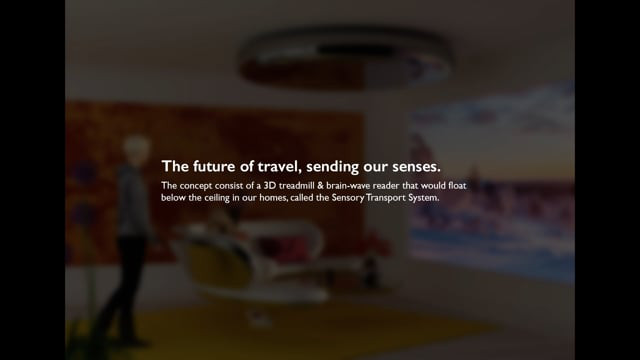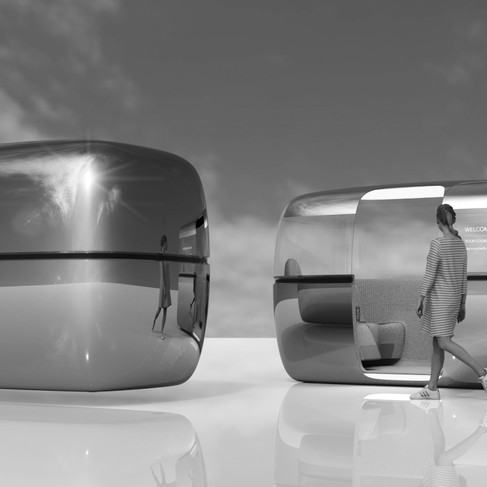A travel concept for the future.
The American president Abraham Lincoln once said, “The best way to predict your future is to create it.” As a product designer, I have often had the opportunity to design products that never existed before; products that have improved many people’s lives. So, in a way, I have taken part in creating the future. As a designer, I often think about what my ideal future would look like if I were to design it. Which areas would I like to see improve in order to make life easier and to keep our planet a beautiful place to live. There are, of course, many areas to consider and many wishes to be fulfilled without having a solution to a specific problem or knowing if an idea would be beneficial to all. So, for me, the best thing to do is to start making a wish list for the future and to look at some of the signals that are popping up around us to create a better tomorrow.
Working as a designer, I have learned over the years that not everybody is open to change. And because the world consists of so many different cultures and traditions, it is very difficult for me to envision a future which many of the Sci-Fi writers and movies depict; A future that is dark and full of conflict; Buildings, interiors, products and vehicles that look much too complicated and nothing looks friendly.
Human beings like their traditions and everybody has different tastes and lifestyles. This is one of the reasons that I do not think our future will change so drastically visually. Yes, technologically and medically we will have advanced very much, but how and what we surround ourselves with will be a mixture of old and new.
My main goal, as a designer has always been to keep it simple. Simple to use, simple to manufacture and to keep the number of parts to a minimum. The more parts you have, the larger the risk for a part failure and the product malfunctioning. This applies to everything we as humans build. When you watch many of the Sci-Fi movies, the space stations and spaceships, the buildings and interiors are all built with thousands, if not millions of parts. Don’t get me wrong here, I am all for expressing one’s artistic license, and of course it makes the visual imagery much more exciting, but once in a while it would be nice to see a Sci-Fi movie that would depict the future in a bit more convincing approach to how things could be built in the future. If you were to ask a mechanical engineer to construct a spaceship or a building from one of these Sci-Fi movies, I’m sure they would do everything they could to reduce the number of different parts, as this would have two major advantages; One, it would reduce the cost of the end product; Two, it would reduce the risk of a part failure, which is something you definitely don’t want when flying around in outer space. Therefore, it only makes sense to me that our future will look much less complicated than how it has been depicted in many Sci-Fi movies and novels. Things will be built/manufactured much simpler. Our buildings, interiors, products and vehicles will look simpler, be easier to use and be more pleasing to the eye. The goal with the advances that we make and the new technologies we invent, should be to make our lives simpler & easier.
The year is 2020 and our world is having major climate changes and we are experiencing a huge health crisis, the Covid-19 virus. With this virus, a lot of changes have occurred in the world; At the beginning, all major airlines stopped flights around the world; Businesses had their employees work from home; Stores, bars, restaurants, nightclubs, fitness centers, salons, theaters and schools were all closed. In many countries, citizens are required to where surgical masks when using public transportation, walking on the street or shopping; Experiences that are all new to many of us. But through all these new events we have learned that some of these changes may just help us to wake up and find solutions that could help reduce the risk of another pandemic, and in the end, make our daily lives safer and easier.
Scientists predict in the future our planet could realize a much more severe pandemic, an enormous eruption from a super volcano, or Earth being hit by a huge asteroid or comet. One or all of these events could reduce the earth’s population and affect how we, as the human race, continue our lives. We would need to structure our lives in other ways, just as we have learned to do in the year 2020. The three areas that have been affected considerably during this pandemic have been the workplace, education, and travel.
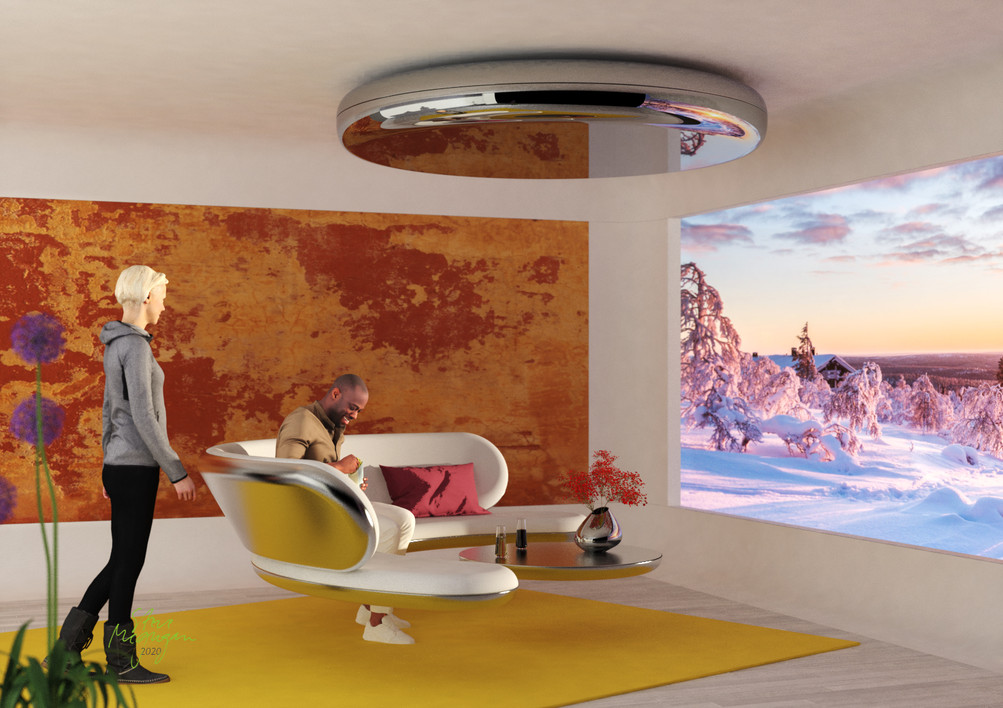
So, the problem is, how could we travel in the future and not affect our environment or spread dangerous viruses? And how could our workplace and education system function without exposing ourselves to potentially deadly infections. These are the main criteria that I have set for myself in finding solutions for futuristic travel, work, and education.
The Sci-Fi TV series ‘Star Trek’ from the 1960’s has shown us a possible solution: The ‘Transporter’, which was used to move people and objects from one place to another. The idea behind the ‘transporter’ was to convert a person or object into an energy pattern, (a process called ‘dematerialization’), then ‘beam’ it to a target location where it is reconverted back to its original matter, (called ‘re-materialization’). Many scientists agree that it would be completely impossible to take a human being apart, atom by atom, move all of the atoms to another spot and then put them all back together correctly. But, as human beings, we’ve learned we should never say the word ‘impossible’, as we never know what will be possible in the future.
There are already ideas suggesting that we could experience ‘travel by proxy’ through androids. With this concept we would, at least, not spread disease and we could still have a tourist’s experience at any destination on earth by having our android walk around for us, sending the experience back to us. The only problem I see with this concept is, where are we going to store all the life-size robots around the world and how will we move them from one location to another? This concept sounds a little impractical in the long run.
If we look at the concept of the ‘transporter’ from Star Trek as a possible solution for solving the issues of traveling, tourism and using human-sized androids, we could create a simpler solution that could transport us anywhere on the planet by using some of the technological solutions that have already been invented, (with major improvements, of course), and combining them with the technological advances of the future.
With the internet we can send/transport images, documents and movies to any place in the world as long as there is an internet connection and a device to receive the information. We have app’s like Skype, FaceTime, Google Duo, Teams and Zoom that enable us to use our mobile telephones or computers to see a person we are calling, and that person can show us what it looks and sounds like where they are at that given moment. So, two of our senses, (seeing and hearing), are being transported to another place without us physically being there. With this solution we are dependent on another person to show us what that place looks and sounds like. Hey, not bad for where we are in history right now.
What if we combine this experience together with.…3D holography, brain biometrics, mini drones, a 3-dimensional treadmill, and a world-wide, high-speed, four-dimensional internet. By putting these technologies together, we could create a system that could transmit a 3D holographic image of ourselves, (an avatar), to another location where we could walk around seeing, hearing, smelling, feeling temperature and communicating with local people, and experience what it would be like at any destination on our planet.
The drones would be powered by a clean, self-generating, levitating power source and hover in the air at the same height as yourself and project a 3D holographic image of yourself. The STS would register your movements and speech and would send this information to the drone. The drone would scan the surroundings at this location and send this information back to the STS. The STS would project a 3D holographic image of the surroundings and you would be able to see, hear, smell and even feel the temperature at that chosen location in the privacy of your own home. One scanner on the bottom of the drone would scan the surface below it. This information would be sent back to the STS where the person would be able to experience walking on a beach, walking through a forest, or even walking on a cobblestone street in Rome, as the surface of the 3D treadmill would change to mimic the scanned surface below the drone.
With this solution you could meet new people; people that live at the place you have chosen to visit, and they could show you their culture with tours through their city, take you to cultural attractions such as ancient buildings or let you experience a local theater. You could even meet new people who are also using an STS to experience other cultures. All this information would be transferred directly to the STS and you would be able to experience being at a different place on the planet without physically being there. This solution scans and receives information in real time and sends this information from one location to another, creating a close-to-real-life experience of transporting one’s senses, and senses is the keyword in this concept.
Compared to the Star Trek solution in which the entire human body is ‘transported’, my concept would enable the senses to be ‘transported’. This, of course, would have a few drawbacks; due to the lack of our physical body being present at the desired location, we would not be able to touch and feel objects with our hands or be able to partake of the local cuisine. But facts show that many viruses are spread quickly through physical contact with an infected person, and/or droplets/spray from an infected person’s nose and/or mouth. So, this concept eliminates these risks and makes my idea an alternative to physical travel.
This solution would not contribute to global pollution or the spreading of dangerous viruses between people, as the person would not leave their home. The person would not affect the local ecosystem, as they would not physically be there. There would be no need to store or transport life-size androids around the planet. And it would not be possible for a tuorist to be involved in any criminal event or act. This solution could be used in many different ways, such as working with colleagues in other parts of the world, or even down the street. It could be used for educational purposes, just as we have learned to do using FaceTime, Skype, Zoom or any other video conferencing solution out there at the moment.
This would be a very compact and flexible concept, as it would take up very little space in our environment and the drones would be able to be used by many different people. An added benefit would be exercise and fitness, as users would need to walk, jog or hike in order to see and interact with the environment and people at their chosen destination. This is where the 3D treadmill in the STS comes into play; It would move in any direction that the user wants to move, as well as changing the surface they are standing on to adapt to the surrounding topography; It would change in color, texture, angel and height, adding realism to the virtual travel, work, education experience.
Now, you may be asking yourself, ‘Why is there the need for the drone to project a 3D hologram of yourself, when all that is needed is for the drone to hover around, picking up all the information and sending it back to the STS?’ This concept is about transporting one’s senses, and one of the most powerful travel experiences is the visual experience. It’s about interacting with other people, and I think it makes the act of meeting new people more personal when you can see what that person looks like, instead of just seeing a mini drone hovering in the air. I sincerely hope that the future will be a beautiful place and that the new technological advances we make do not take away our ability to express ourselves as humans to one another.
This solution is by no means unrealistic if you look at the different technologies that I have chosen to build this concept around. Every year a myriad of technological advances is realized, and some of these technological advances could be combined to enable a travel experience of this nature in the future. In 2019, Elon Musk announced that his company Neuralink had developed a chip that can be implanted in the brain and transmit information from the brain’s neurons to activate a smartphone or any other technology. We are already seeing the first baby-steps to realizing the power of our brainwaves, and I truly think this area will become a big game-changer in the future.
My concept is maybe a bit simple compared to many of the fantastic ideas that have been created in Sci-Fi movies over the years, but I wanted to create a concept that is believable in the far future, or even sooner.
This futuristic concept may only be available to a small segment of our society, but I hope that my vision will or can be implemented throughout the world. A vision of a safer and cleaner way to experience our world, conduct business, and educate the masses is better than no vision at all. It is up to us all to strive to make our world a harmonious and beautiful place to live, otherwise, why are we here?
Albert Einstein once said, “Logic will take you from A to B. Imagination will take you everywhere.”
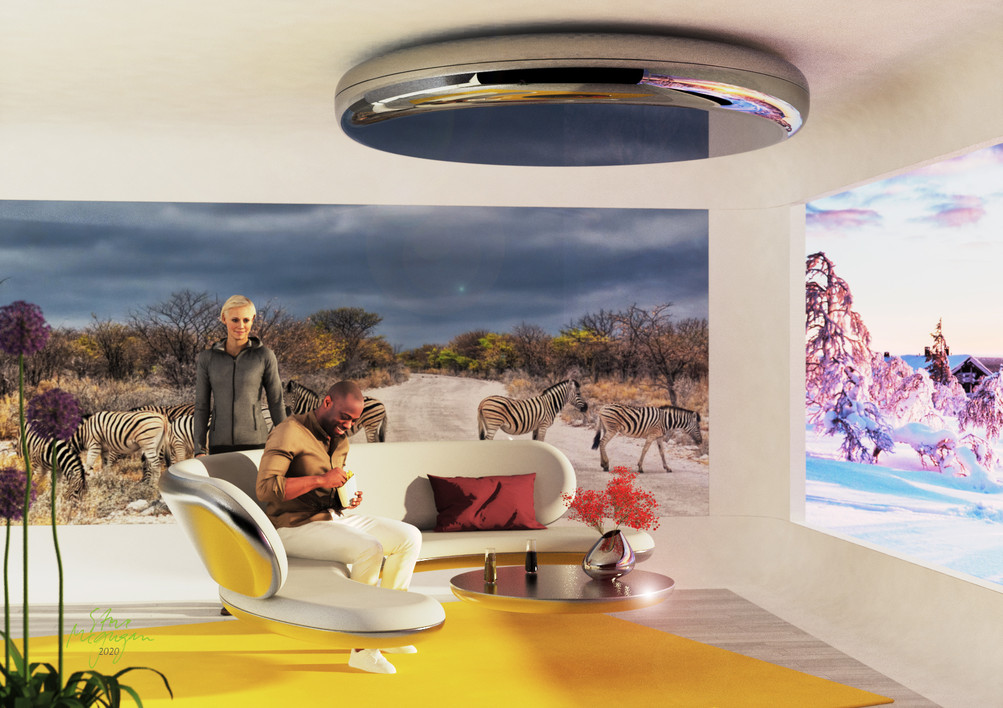
The man is sitting on a levitating sofa arrangement. Levitating furniture will allow the users to easily move their furniture to create different seating experiences as shown in the beginning of the video, with the sofa positioned to enjoy the sunset. The user can move the sofa by unlocking it’s GPS coordinates; In the future it will be possible to lock levitating objects within millimeters of a desired position. The wall in the background is a huge 3D hologram projector. It is used for entertainment as well as decoration. When not used for entertainment, the wall can be used to show different types of surfaces such as brick, wood, or colored walls. Here, the users have just finished watching a 3D hologram about zebras in Africa, and they then decide they would like to have a wall decoration from the ancient Roman city of Pompeii. Once the sofa arrangement has been moved away, there is now space to use the STS. By using their brain waves, the couple can open the STS and walk inside. At first the couple walk together in Sequoia National Park in California. In the distance a mini drone monolith can be seen. Next the woman is walking by herself, then she thinks she would like to visit Rome instead. While in Rome, she meets another STS user from Japan who tells her about a beautiful bamboo garden near Tokyo. Using her brain waves, she connects to a mini drone monolith near the bamboo forest and walks up the steps experiencing the beautiful light shining through the bamboo, the warm temperature, the fresh smells of the leaves and the sound of birds singing.
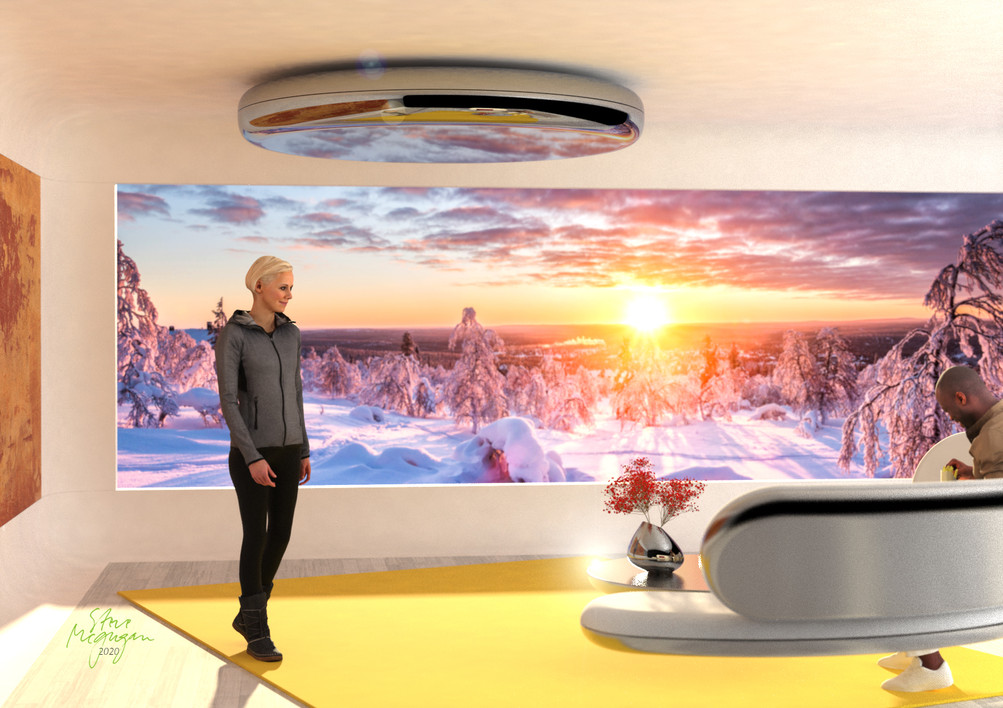
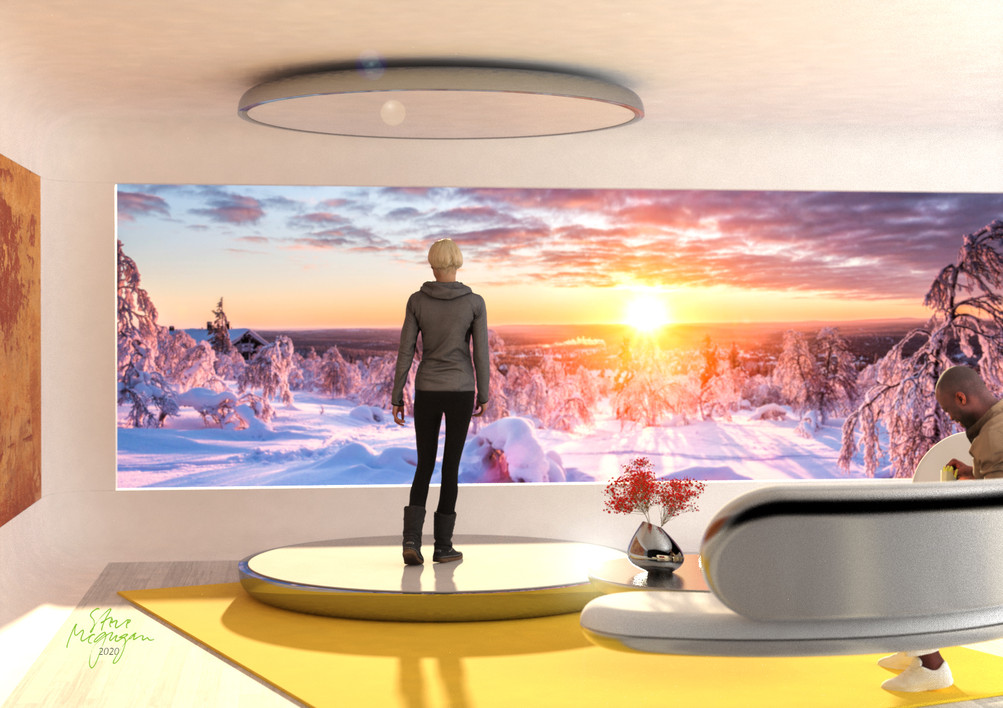

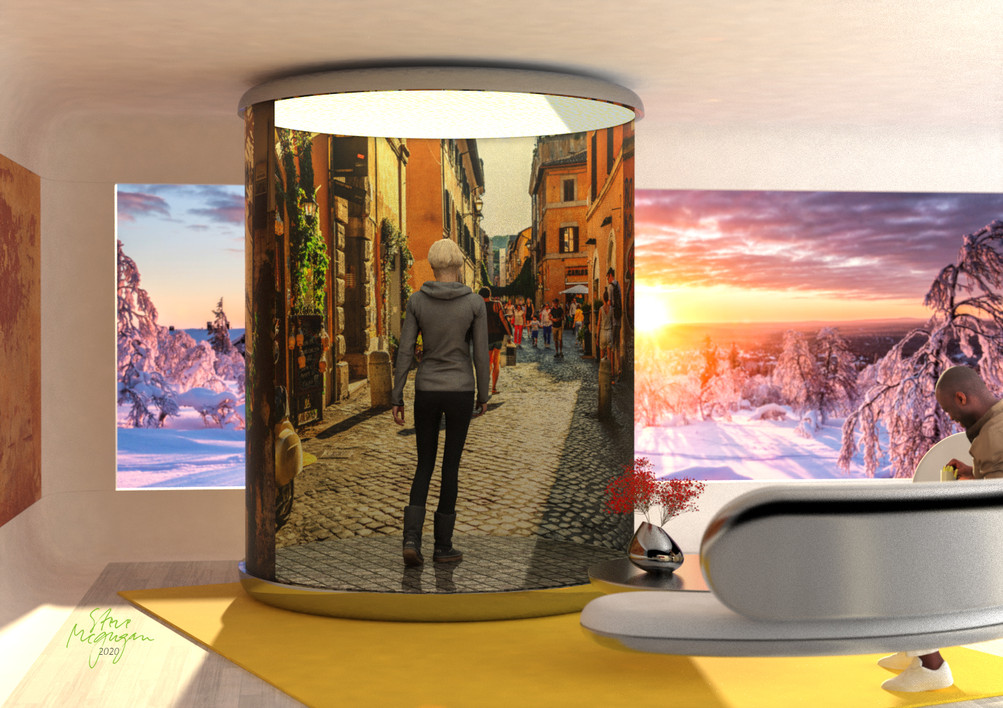
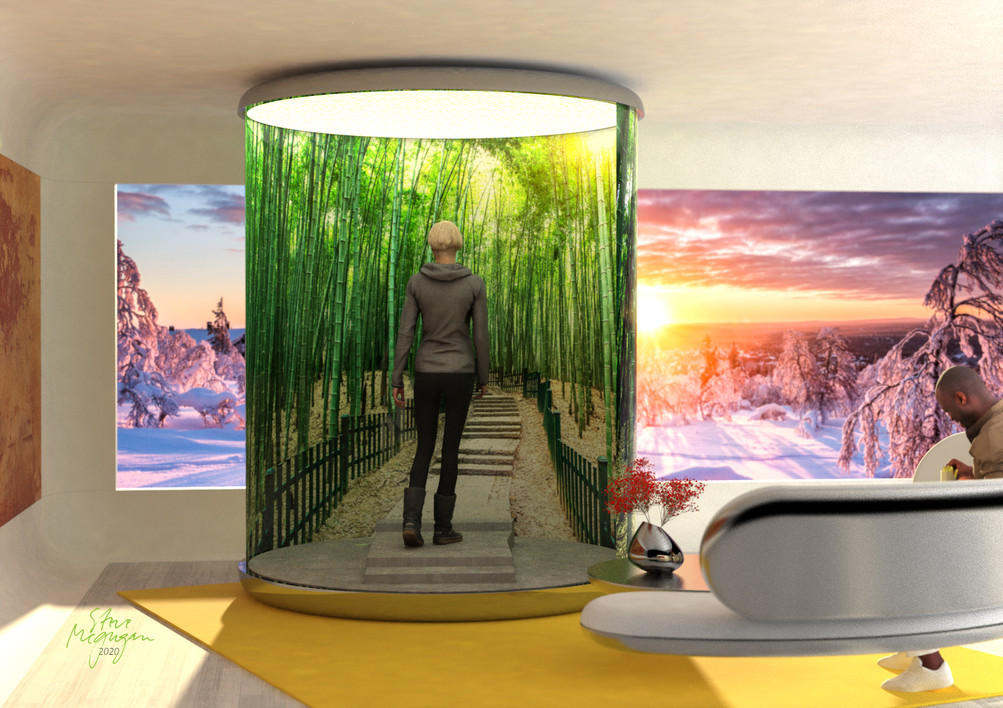

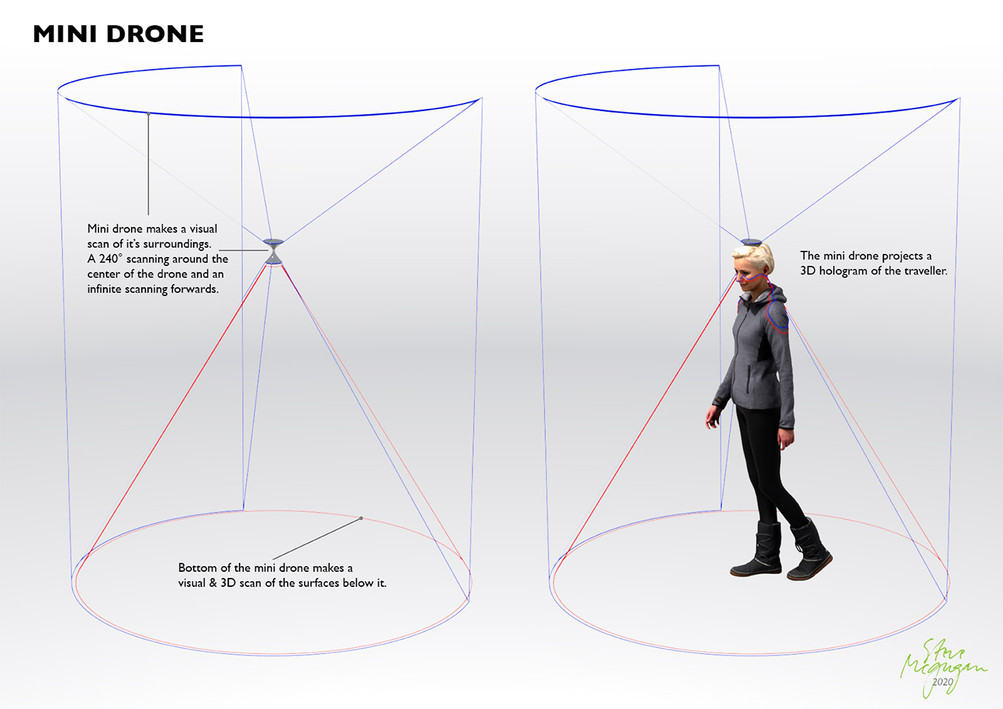
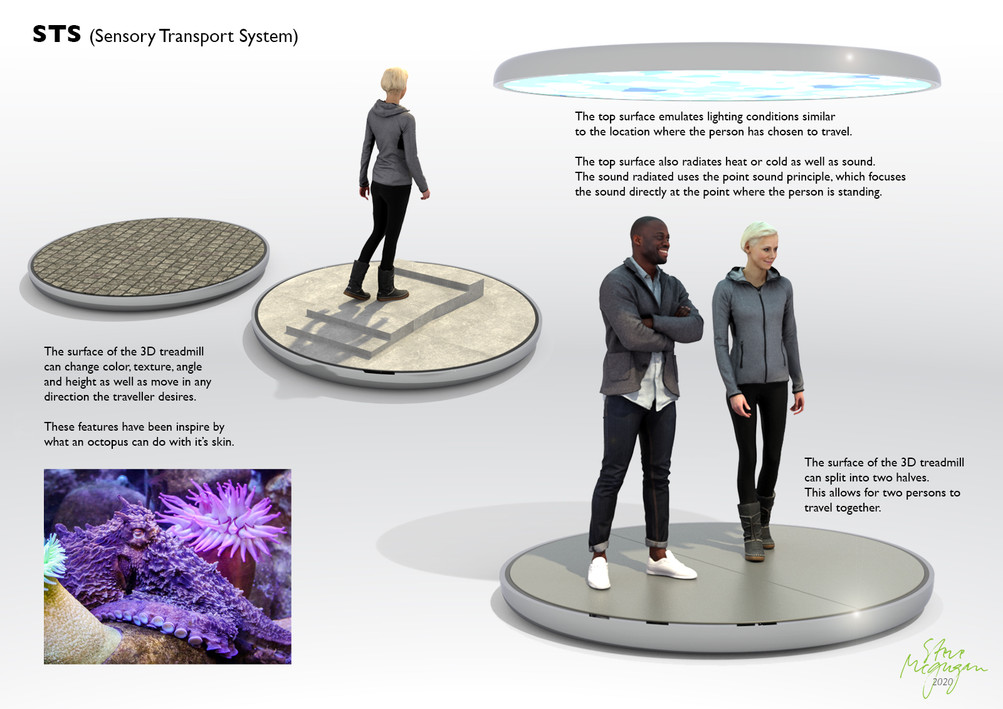
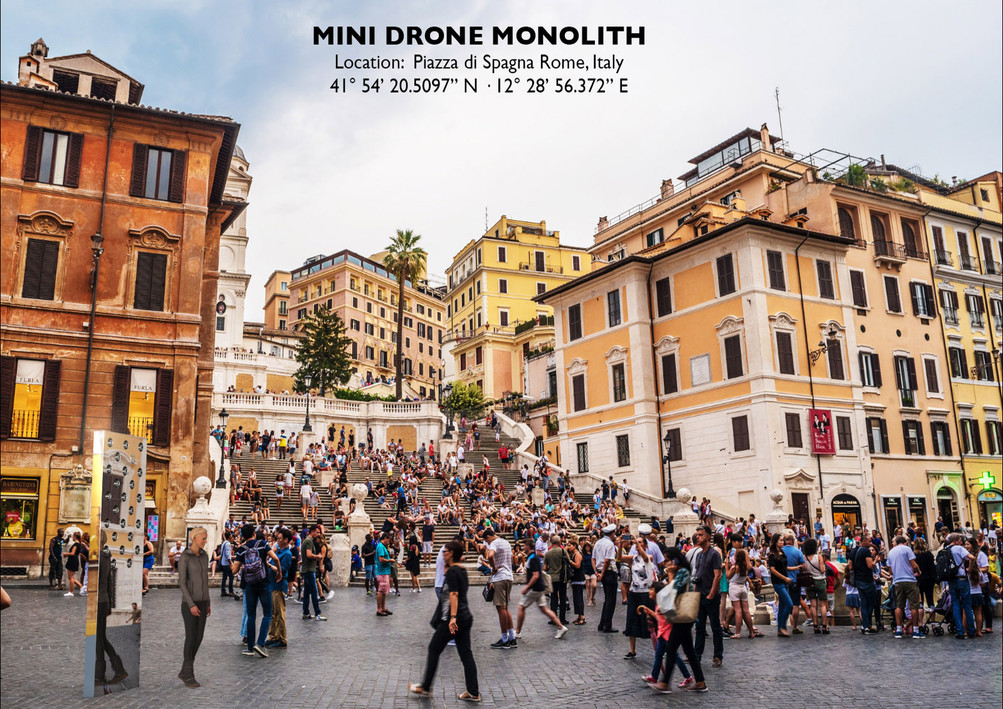
Signals around us for future predictions.
Signal 1: Grocery Shopping
One of the most inefficient areas of our society at the moment is the purchasing of food at a supermarket. Of course, we need to buy food, but the way we buy groceries should, and is on the way to being much more efficient thanks to ´Amazon Go´. This new concept is based on Amazon’s ´Just walk out´ technology. The solution offers a line-free, no-human-interaction solution. The consumer walks into the supermarket and then walks out with their groceries. No need to take the items down from the shelf and put them into your shopping cart, then take all the items out of the cart and place them on a conveyor belt to the cashier, then put all the items back into the shopping cart again - very inefficient.
Amazon has gone even farther by offering an online service where groceries can be bought online, and an employee will bring the groceries to your car. This solution eliminates even having to walk into a supermarket and to carry your groceries to your car. This solution is already in practice at supermarkets in the U.S.A.
Another signal that could show the way to the future of food production and consumption would be that we grow food in our homes. Already today some supermarkets have installed large glass cabinets or ¨Farm’s¨ in which they can grow lettuce and herbs right in the supermarket. This solution already helps to produce fresher products, eliminates emissions from transportation and uses 95% less water than growing plants outside. If this concept was to be further developed, we could, in the future, grow many fresh vegetables in our homes.
Future prediction: There will be no more supermarkets. We will grow and 3D print a lot of our own food at home. The food we can’t grow or print at home will automatically be ordered by intelligent refrigerators/kitchens, and it will be delivered directly to the fridge by drones; We will all eat less meat and fish; Most of the meals we will consume will be premade by robotic factories, and these factories will grow or print the food they need to prepare ready-to-cook meals. This is not any different than what we are experiencing at present with the increasing number of services that deliver ready-made meals directly to our door.
In the future the purchasing and consumption of food will change in ways that will offer new experiences and help improve our health, as well as our environment.
Signal 2: Shopping for everyday products
I see a future where there will be no stores where consumers go to purchase products. When a “Brand” develops a new product or fashion, the consumer will, (by using an advanced form of augmented reality), be able to view and try out any product at home before purchasing it. This is already happening today with some companies at a low degree of interaction, but in the future the experience will be 100% realistic. There will be no need for tool makers or assembly factories. We will be able to 3D print the new product or clothing directly from our favorite Brand. Not everyone will have the luxury of owning
their own advanced 3D printer, so the items could be 3D printed by the Brand and sent to your desired location by autonomous drones.
Signal 3: Entertainment
There will be no need for human actors or actresses. Actors will be 3-dimensional computer graphics. The advantage being that computer actors can work 24/7. They would be able to do any stunt, dance move, speak any language, transform themselves into other beings/things, and in general, be able to do anything imaginable. This is not so far-fetched, as this is becoming the case with more and more computer games and has even been seen in the fashion industry. 3D computer generated fashion models are being hired by big name companies to show their newest fashions in the virtual world.
Signal 4: Robots
Predictions for the future cannot be made without tackling the discussion of robots. Will they play a major role in the future or not? They already do! Today we have robots to assemble our cars and other products, to cut our grass, to vacuum and clean our floors and to help build our infrastructure, (bulldozers, cranes and excavators are more or less simple robots that are an extension of our bodies). Companies like Boston Dynamics have already come a long way in developing some fantastic robots that can move with the grace and agility of a human being, and I am sure this company will be a major player in how robots will affect our daily lives not so far in the future. I am very sure we will have robots to do all the manual and monotonous labor that humans do today. They will construct our buildings, manufacture our vehicles and maintain our infrastructure. They will grow, harvest, prepare and deliver our food, and they will build themselves. They will be sent out into space to explore new worlds and prepare for our arrival on new planets. We, as human beings, will do the programming and decision-making for these robots, hopefully keeping them from becoming “self-aware”. I do not see the need to give robots so much computing power that they have the ability to question their own existence. This would only cause problems for us.
Signal 5: Communication
With the help of super computers and brainwave technology, we will have learned how to communicate with a select few animals on our planet, and they will impart unique and insightful information about our planet.
